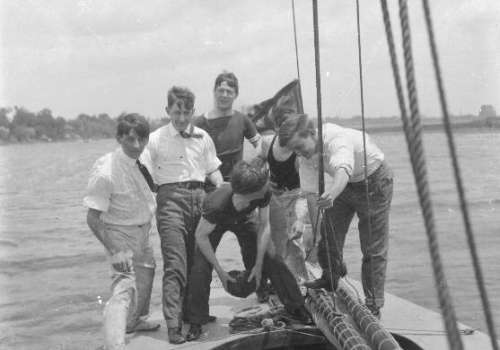The History of the Lost Peninsula

Lost Peninsula is a small part of Michigan that became separated because of the 1835 Toledo War, changing the Michigan/Ohio Boundary. It was also the staging area for rum runners, bringing illegal spirits into the United States from Canada.
The Toledo War
The Toledo War (1835–1836; also known as the Ohio-Michigan War) was the largely bloodless outcome of a boundary dispute between the U.S. state of Ohio and the adjoining territory of Michigan. The dispute originated from conflicting state and federal legislation, passed between 1787 and 1805, which left Ohio’s northern border uncertain.
The governments of Ohio and Michigan both claimed sovereignty over a 468 square mile (1,210 sq km) region along the border, now known as the Toledo Strip. When Michigan pressed for statehood in the early 1830s, it sought to include the disputed territory within its boundaries, but Ohio’s Congressional delegation was able to halt Michigan’s admission to the Union.
Beginning in 1835, both sides passed legislation meant to force the other side’s capitulation. Ohio’s governor Robert Lucas and Michigan’s then 24-year-old “boy governor” Stevens T. Mason were both unwilling to cede jurisdiction of the Strip, so they raised militias and helped institute criminal penalties for citizens submitting to the other state’s authority. Both militias were mobilized and sent to positions on opposite sides of the Maumee River near Toledo, but there was little interaction between the two sides besides mutual taunting. The single military confrontation of the “war” ended with a report of shots being fired into the air, incurring no casualties. There was only one serious injury in the entire conflict: the stabbing of a Michigan deputy sheriff involved in the arrest of a partisan Ohio family.
In December 1836, the Michigan territorial government, facing a dire financial crisis, surrendered the land under pressure from Congress and President Andrew Jackson, and accepted a proposed resolution adopted in the U.S. Congress. Under the compromise, Michigan gave up its claim to the strip in exchange for its statehood and approximately three-quarters of the Upper Peninsula. Considered a poor outcome for Michigan at the time, the later discovery of copper and the plentiful timber in the Upper Peninsula more than compensated for the loss of the strip.
From Wikipedia, the free encyclopedia
After 1952….
Starting in about 1952 Bervel Edward “Pete” Grant assisted by “Big” Melvin Brown started digging out what would become “Lost Peninsula Marina”.
Lost Peninsula starting off, a lot of labor hours ago…. This is a tribute to the individuals who had the vision, and ingenuity to overcome obstacles and create what many people now enjoy.
Current Owners of Lost Peninsula, Bill & Jill

Photo of a ship in 1900 exiting the Maumee taken from Lost Peninsula.

Excursion Boats from Lost Peninsula 1910 (West Side).

Youths on the Maumee from Lost Peninsula 1902.
Mr. Robert Rombkowski and Daughters fishing in 1946 from about where the fuel dock is now.
Mrs. Harriett Pheatt in her Orchard on Lost Peninsula May 19th 1946.
Mr. Lyman Bates (left), and His Cousin Harold F. Mensing changing plates on Lost Peninsula May 19th 1946.
Mr. Lyman Bates (ladder), and His Cousin Harold F. Mensing working on the house on Lost Peninsula May 19th 1946.
If you have any historical photos of Lost Peninsula and would like to share them on this web page, email them to BillT@LPMarina.com.

